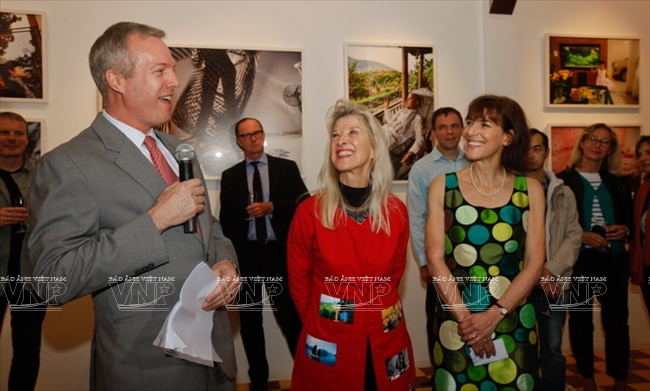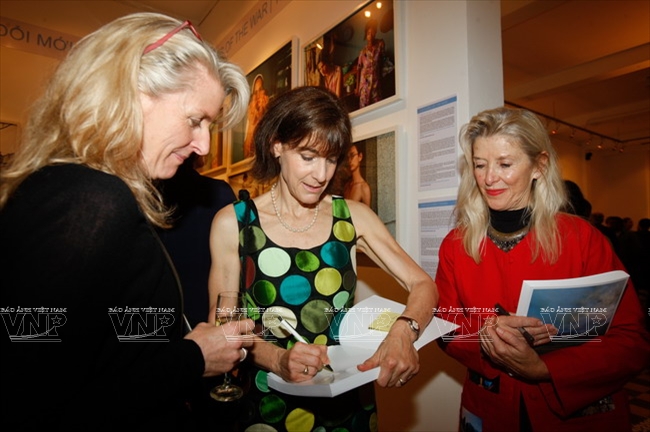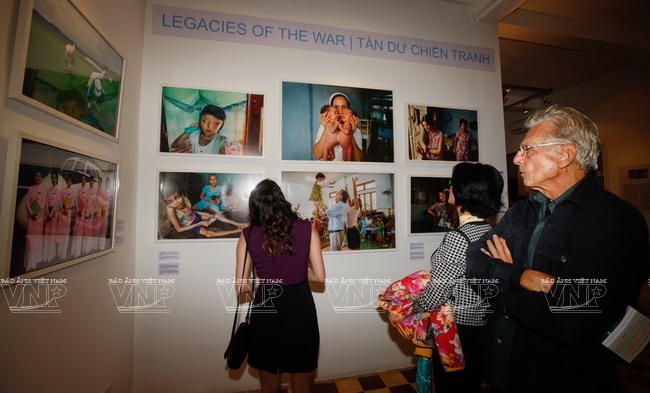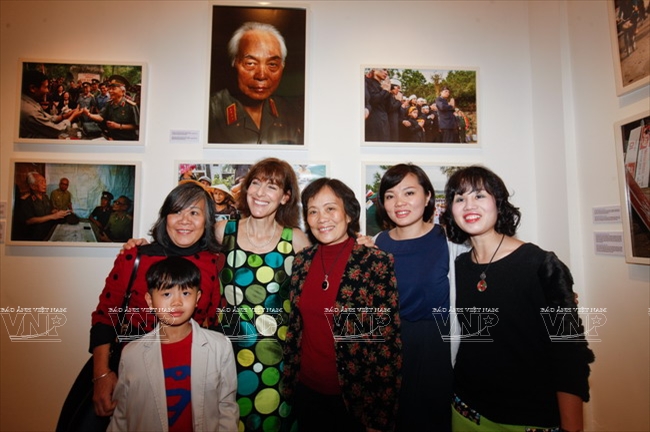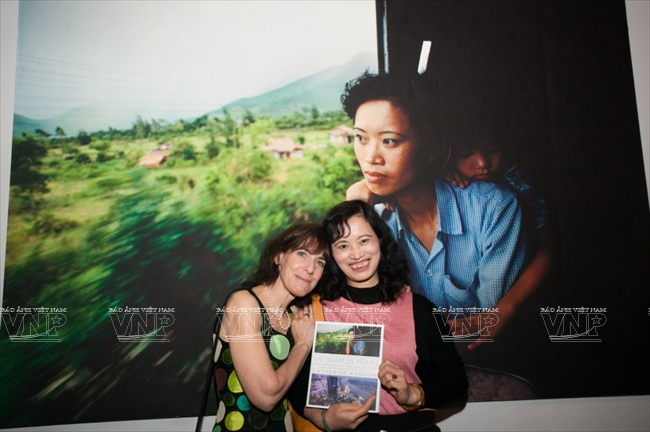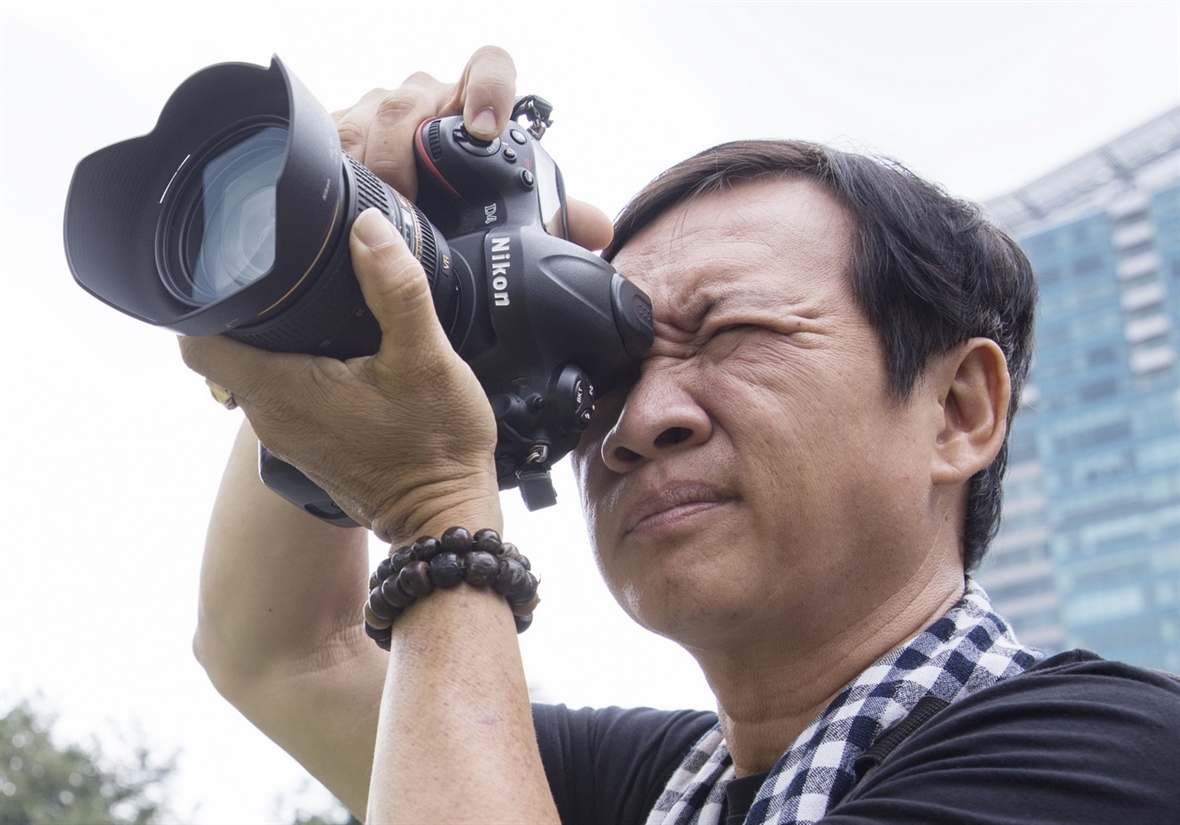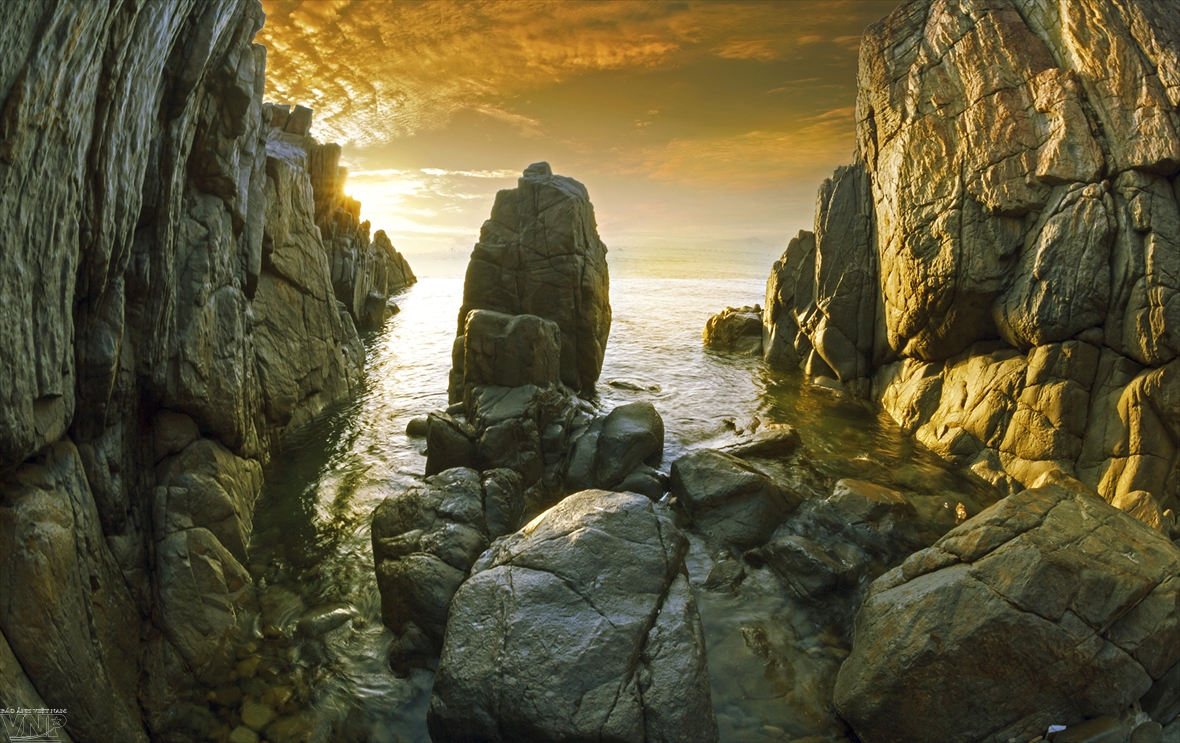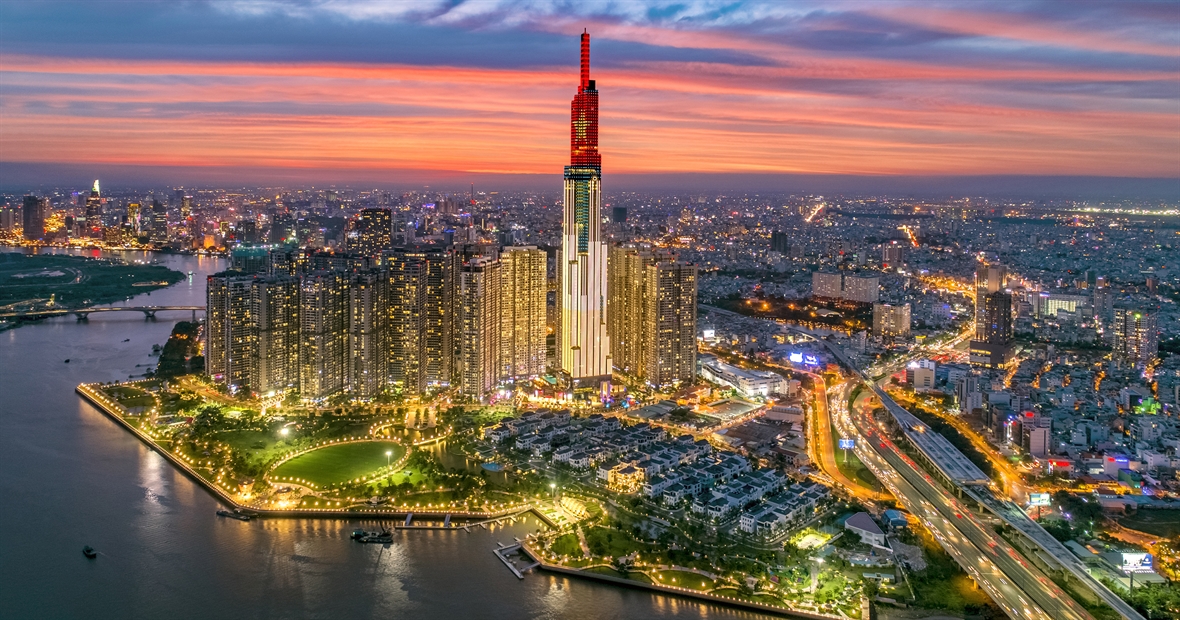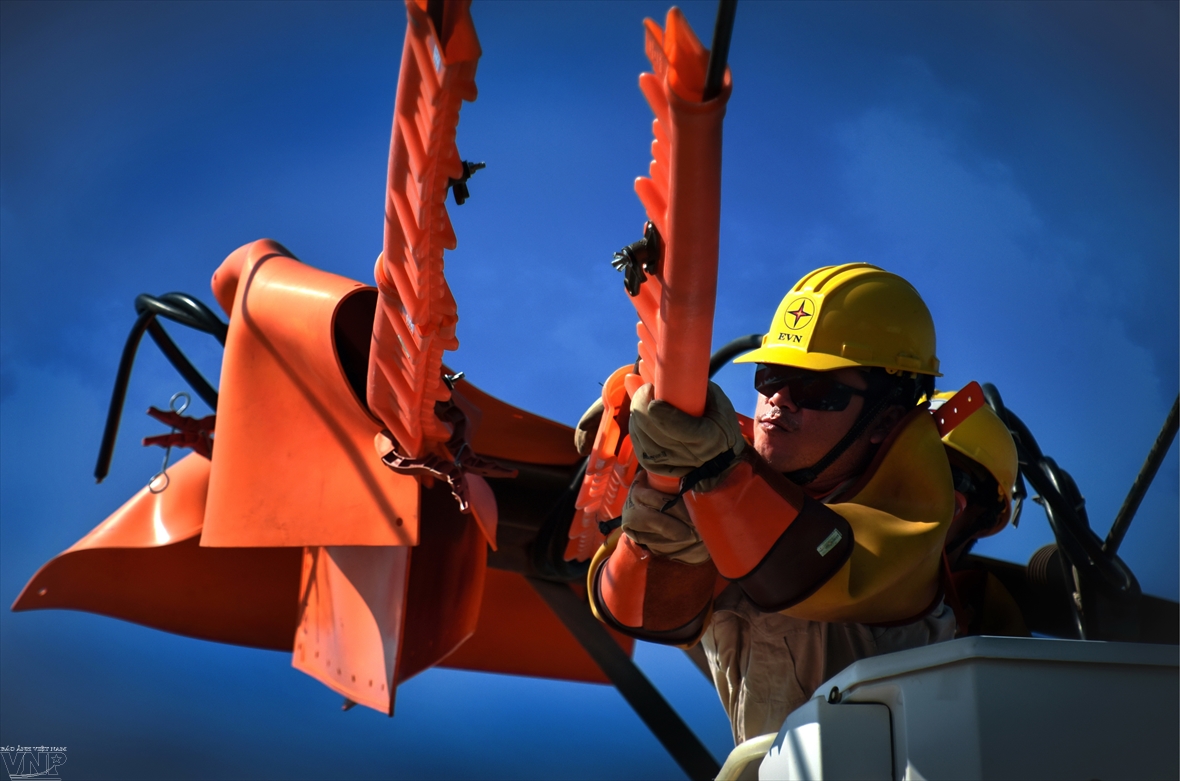|
|
Catherine Karnow’s attachment to Vietnam, her 25-year history of photographing the changing society and landscape is a visual diary of how she entered this land of enigma and discovered its twists and turns at every intersection of life, becoming immersed in the land and its people.
Vietnam has entered the soul of the photographer and at each juncture as she forms relationships – often lasting friendships – with her subjects. Through the photographs, one sees not only the transformation of the country but also the photographer herself. Her photographs show her deep love for the country and its people. Behind the photographs are extraordinary stories of friendship and connections that seem destined.
The exhibition was divided into periods from the years of the early 90’s, General Vo Nguyen Giap, the “Doi moi” years, the Agent Orange/Amerasian, and finally, the New Vietnam. Each era holds its own special place, reflecting the moment captured by the lens of a sensitive camera attuned to the idiosyncratic atmosphere.
The photos of General Vo Nguyen Giap, from her initial visit with the General in 1990 to her historic return to attend the General’s funeral in 2013, are confirmation that not only is she accepted in this land – she belongs. She successfully reflected the love and respect of the Vietnamese for their beloved General who made great contributions to the glorious victories against the French and the Americans. Her works of General Vo Nguyen Giap are considered a precious treasure for the General’s family. At her exhibition, the General’s children, including Vo Dien Bien, Vo Hanh Phuc, Vo Hoa Binh, were very moved when seeing photographs of their father.
Photos of General Vo Nguyen Giap by Catherine Karnow: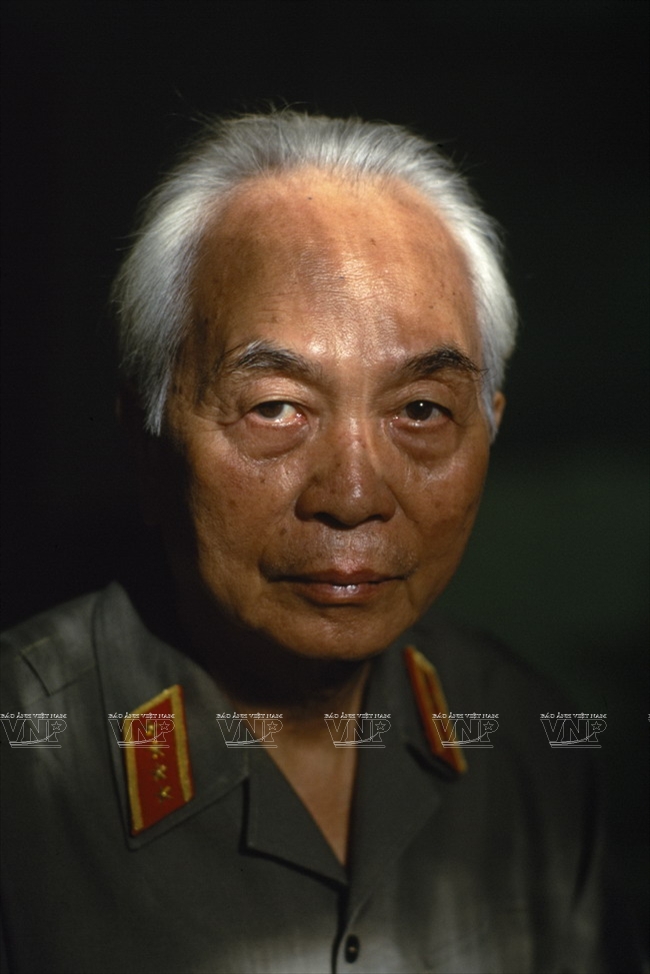 The famous photo of General Vo Nguyen Giap – “Snow Covered Volcano” by Catherine. 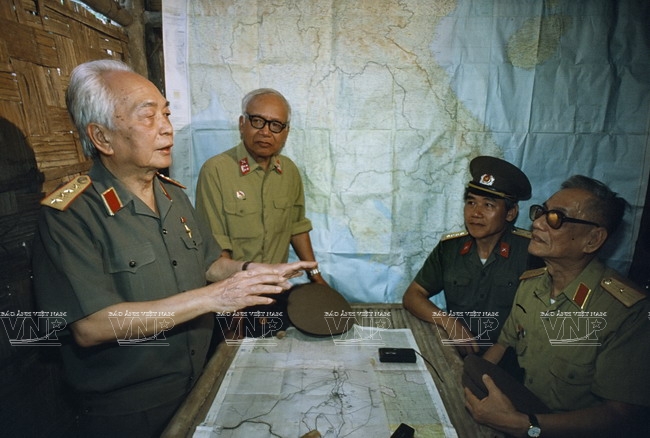 The photo of General Vo Nguyen Giap revisiting Muong Phang in 1990 by Catherine. 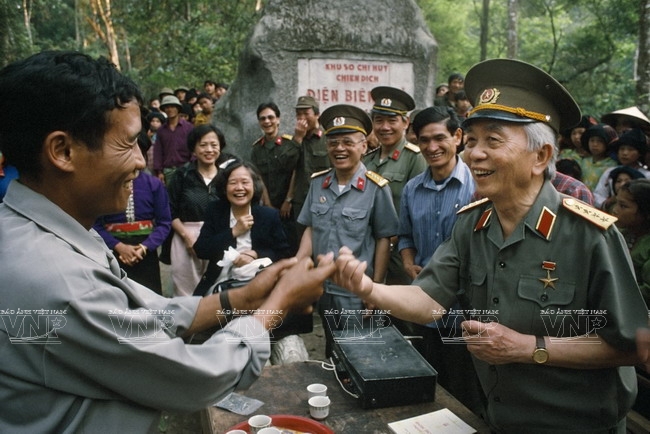 The photo of General Vo Nguyen Giap revisiting the headquarters of the Dien Bien Phu Campaign in 1990 by Catherine. 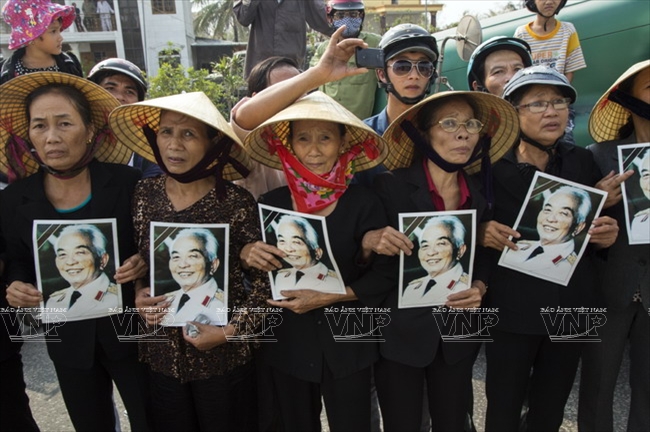 During the funeral procession of General Vo Nguyen Giap: Thousands of people are holding Catherine’s photo. |
The “Doi moi” works portrayed a country opening its doors to international trade. The country formed foreign alliances, poised on the cusp of a bright future, and was hailed as the new tiger of Southeast Asia.
The Agent Orange/Amerasian works depicted the sad legacy of war, tragedy for both sides and resolution unrequited. Disquieting images of disfigured infants, the loneliness of the abandoned Amerasians are not comfortable, but important. To face the tragedy of the past is to begin the healing. Amidst the sorrow one can perceive a faint hope with the promise of reconciliation and healing.
Moving on to the New Vietnam, a series of works reflected the country on the way to open its door for international integration, the youth of Vietnam coming forward, blazing with renewed energy and a passion for life, such as the portrait of businessman Dang Le Nguyen Vu with his expressive desire to occupy the coffee market, the image of Vietnam Airlines’ air stewardess staff showing the shift of a modern transportation sector to connect Vietnam with the world, the eagerness of a teacher on the Thong Nhat train travelling along the North, Centre and the South. Besides, some hot issues in Vietnam are also reflected through her photographs of actor Thai Hoa in a film about a sex change.
The stories of Vietnam, through photographs, also left special imprints on viewers when many of her characters and the photographer herself were also present at the opening ceremony of the exhibition to share interesting stories. Catherine Karnow shared: “The exhibition is a tribute to all the people who have toughened our lives and made Vietnam reside in our hearts”.
|
Photos of Vietnam by Catherine at the exhibition “Vietnam – 25 Years Documenting A Changing Country”: 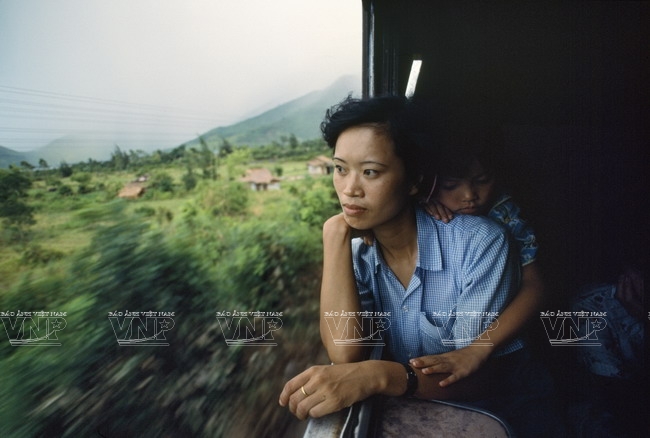 The photo: “Saigon-Hanoi Train, aka the ‘Reunification Express’ approaches the Hai Van Pass, Central Vietnam” by Catherine in 1990. 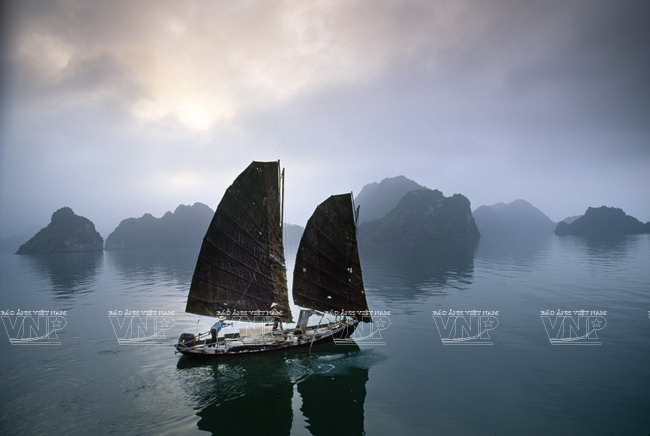 “Traditional Fishing Junks in Ha Long Bay” by Catherine. 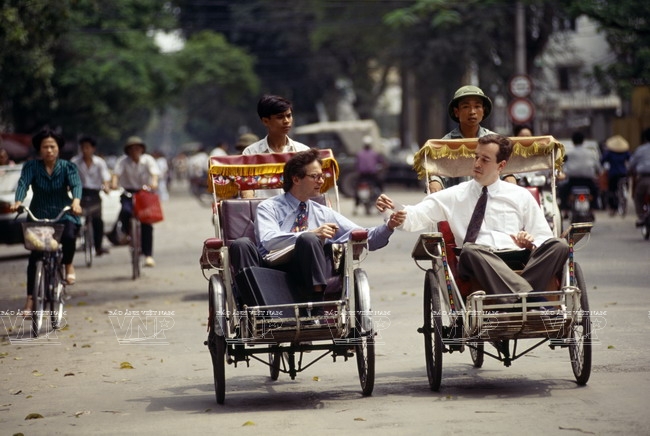 Vietnam during the years of Doi moi with the image of businessmen on cyclos in 1994 by Catherine at the exhibition “Vietnam – 25 Years Documenting A Changing Country”. 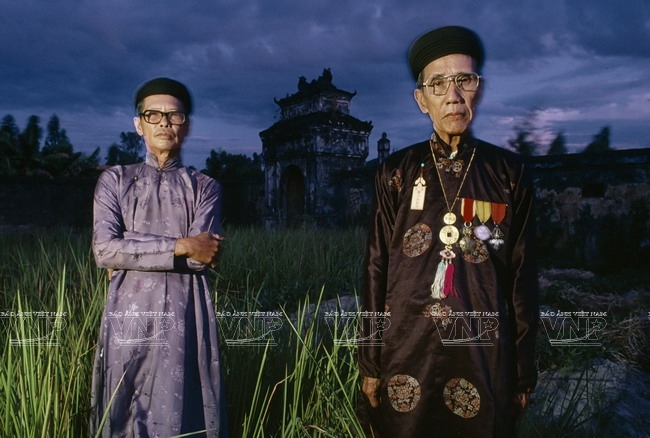 Những thành viên cuối của vương triều Nguyễn - ảnh của Catherine tại triển lãm “Last of the dying aristocracy: Relatives of Emperor Bao Dai, stand in their weed-choked garden” in 1990 by Catherine at the exhibition “Vietnam – 25 Years Documenting A Changing Country”. 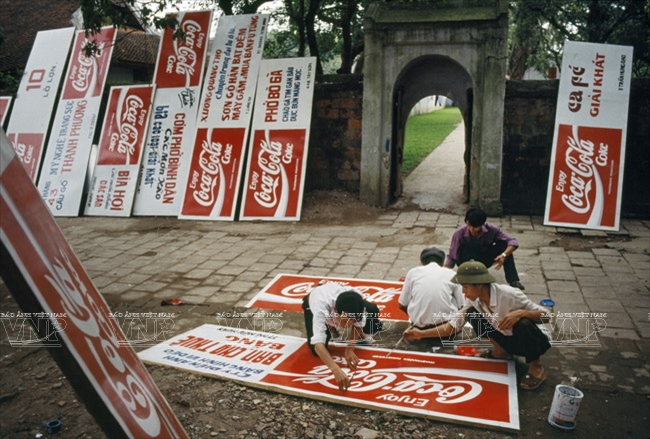 The advertisement poster of Coca Cola appeared in Hanoi in the mid-90s by Catherine at the exhibition “Vietnam – 25 Years Documenting A Changing Country”. 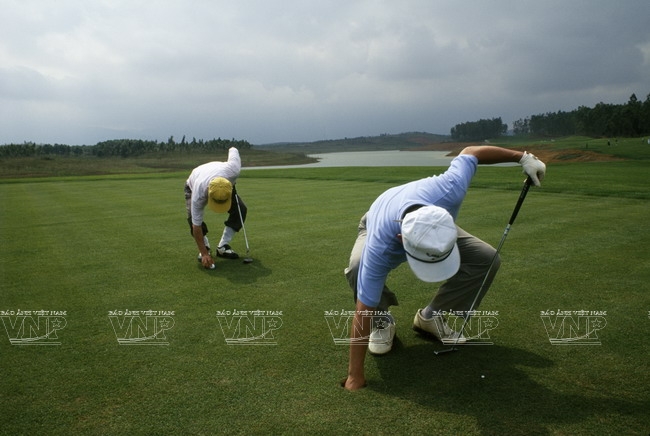 The golf course in 1994 by Catherine at the exhibition “Vietnam – 25 Years Documenting A Changing Country”. 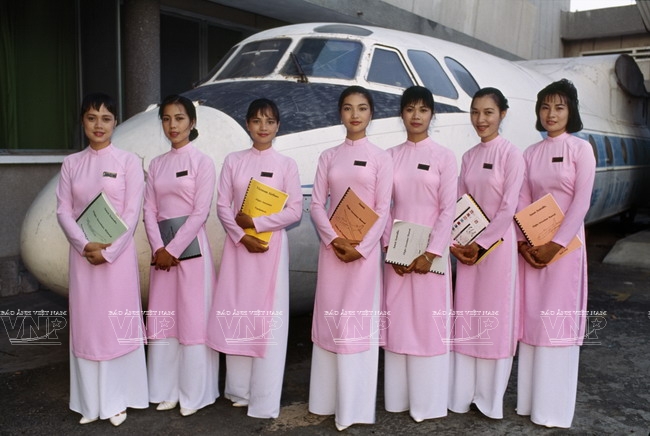 The photo of trainees at a flight attendant school by Catherine at the exhibition “Vietnam – 25 Years Documenting A Changing Country”. 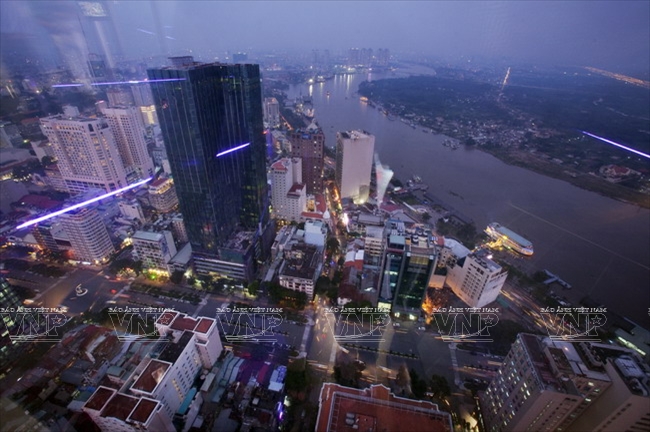 Seen from the 68-storey Bitexco Building in 2011 by Catherine at the exhibition “Vietnam – 25 Years Documenting A Changing Country”. |
phamtrangnhung

